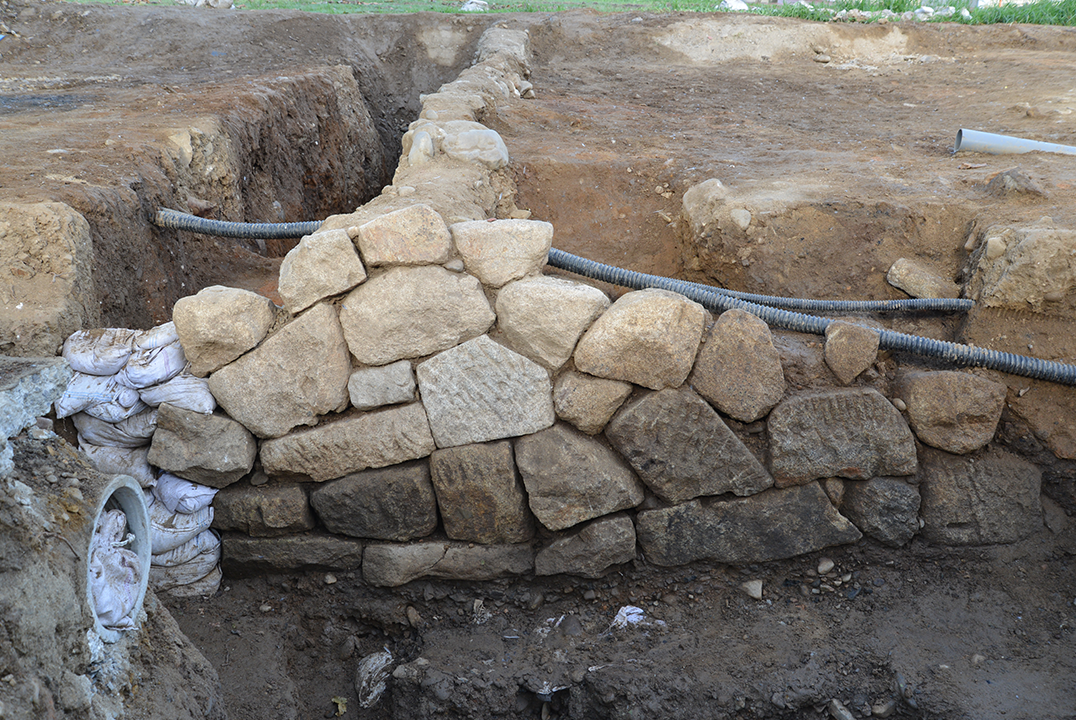Outer Moat of Okazaki Castle

Okazaki Castle’s precincts enclosed the castle and its’ town in defensive earthen walls and moats. This major protective feature extended 1.5km east to west, and about 1km north to south. The outermost moat, known as a sogamae or sobori moat, was also called the Tanaka Moat, as it was constructed between 1590 and 1600 when the castle was commanded by Tanaka Yoshimasa.
This position corresponds with the eastern end of the moat and, from remaining illustrations, it is believed that an earthen wall was built just inside the moat. Excavations of the moat conducted in 2018 confirmed a portion of the moat in the outlying area. The outer edge of this 10 to 14m wide outer moat is presumed to be under the current roadway.
Okazaki Castle Outer Moat Enclosure >

Outer Moat of Okazaki Castle
Okazaki Castle’s precincts enclosed the castle and its’ town in defensive earthen walls and moats. This major protective feature extended 1.5km east to west, and about 1km north to south. The outermost moat, known as a sogamae or sobori moat, was also called the Tanaka Moat, as it was constructed between 1590 and 1600 when the castle was commanded by Tanaka Yoshimasa.
This position corresponds with the eastern end of the moat and, from remaining illustrations, it is believed that an earthen wall was built just inside the moat. Excavations of the moat conducted in 2018 confirmed a portion of the moat in the outlying area. The outer edge of this 10 to 14m wide outer moat is presumed to be under the current roadway.

